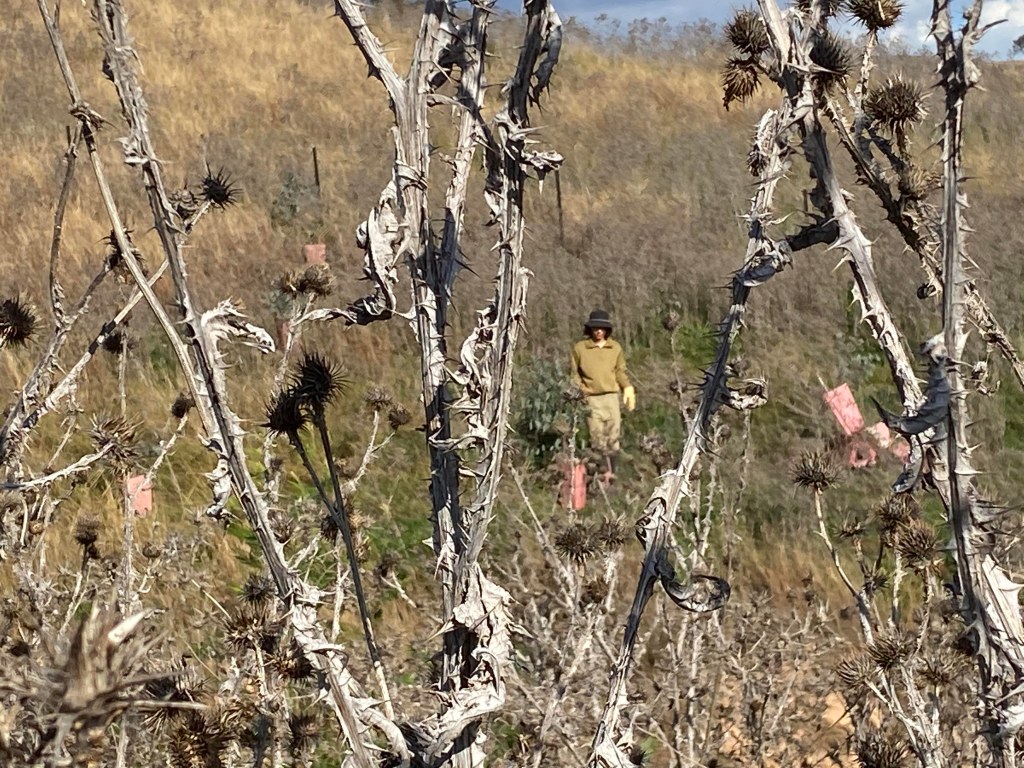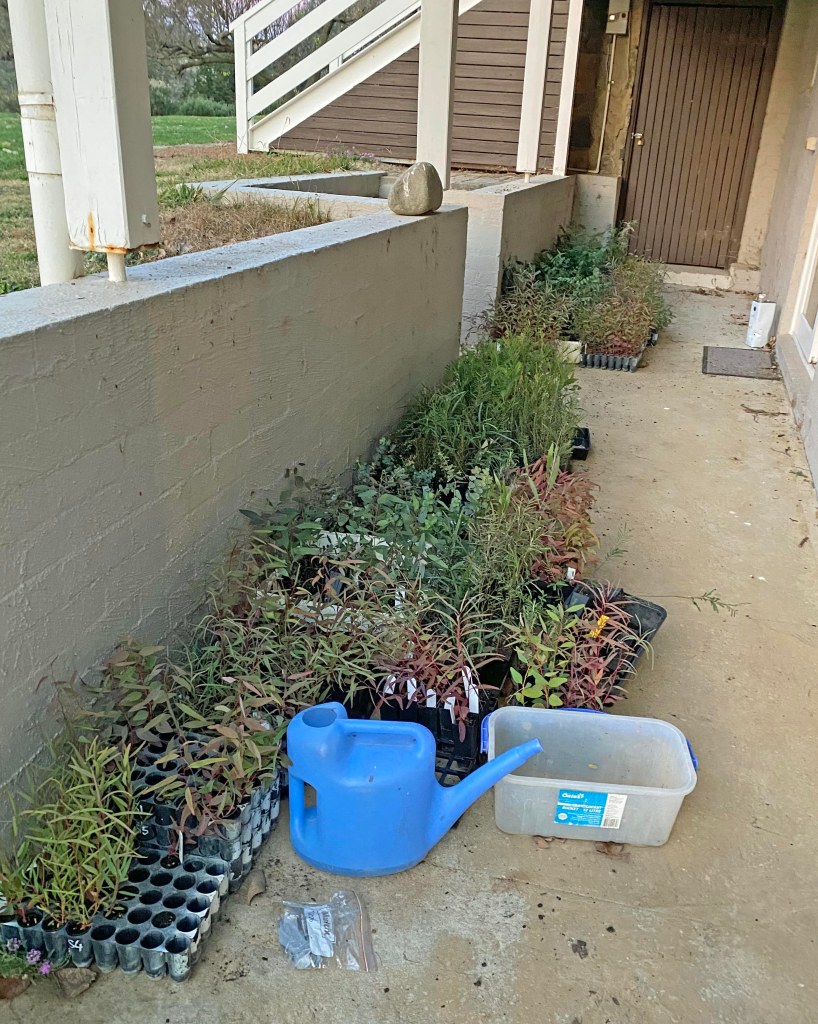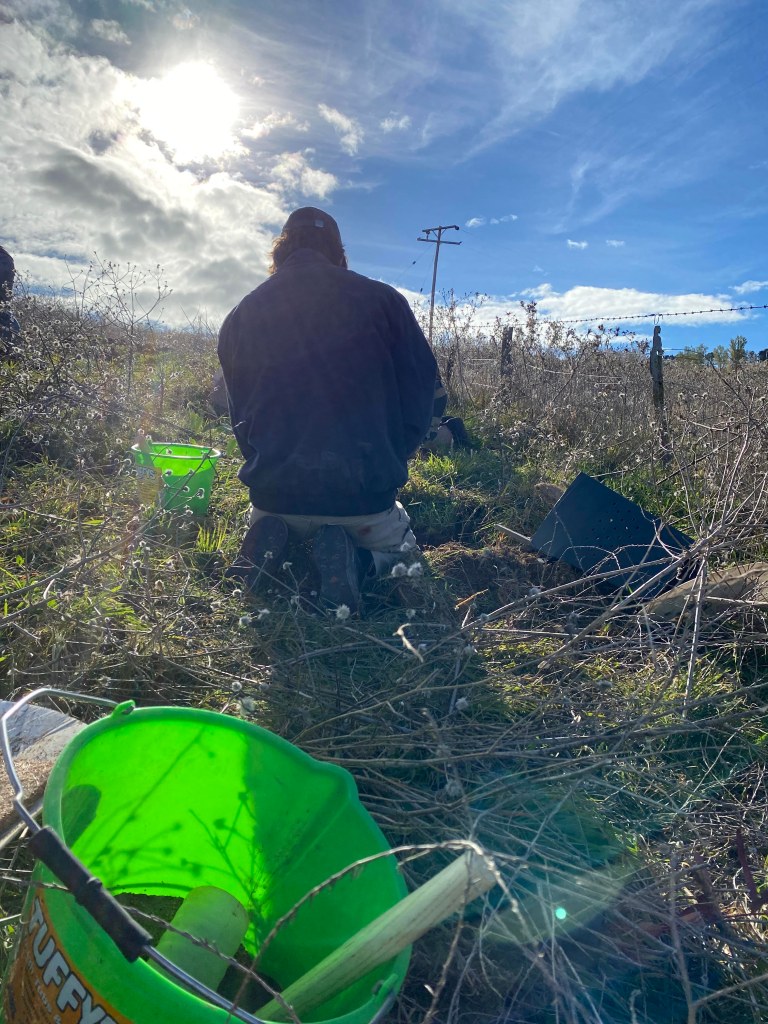After months of weed control, plus stripping tree covers among the Stinking Roger and Saffron Thistle, we’re finally into the planting season, despite being still surrounded by the post-drought thistles.
My mini-forest sits outside our bedroom door reminding me to keep it watered and fed.
The retrieved covers are stacked high in the shed, along with intimidating rows of stakes and the toppling towers of discs that funnel water and keep down the weeds. (Note to self, do not go out and leave both big doors of the shed open, or all those discs will fly away like so many leaves…)
In the last two weeks we’ve moved onto the replanting on Adnamira, adding extra trees to the 2019 plots which were hard hit by the drought. Most of the post-drought replanting we already did last year, but this year I went back to the two remnant tree/stepping stone lots and also a damp area in the cross windbreak that I had no suitable plants for last year. It was nice to see the huge growth in the shrubs and trees, although I wasn’t so fond of it when I was wrestling corflute away from thick wattle branches. I must have been feeling sorry for those trees as survivors of the drought, but it would have been a lot easier to remove the covers last year.
Worryingly, the ground was very dry for that first replanting, but we’ve since had two nice lots of rain that increased the ground moisture to a much better level. I delayed the start of planting for a few weeks while we waited for the weather to improve, as there’s no point going ahead if it’s too dry. I’ve heard that this sort of “flash drought” is what we can expect more of into the future, unfortunately. Forecasts suggest the rest of this winter will be good and wet however, so that’s a plus.

The final area of replanting was the bottom end of a long ridgeline leading down to Wombat Hollow, where I got a fence replaced a few metres away from the old one, to make a narrow windbreak. At some point the old fence will just collapse, but hopefully the trees will be well established then.

That area was the last one we did last year, and it was a much bigger area than my initial calculations allowed for. We spent three days on it, and still didn’t finish as I couldn’t get enough plants (or enough energy or time, with the season advancing into spring).
It’s a mystery, though, why the very last section we did survived so poorly. Both trees and shrubs died. In some stretches, all of them. Usually if it’s poor-quality seedlings, you just lose one species or one type. Perhaps they were all the rejects, scraping the bottle of the barrel after the good ones had been used? Perhaps they weren’t soaked enough before planting? Or watered properly afterwards? I don’t remember anything like that. Or was there a vicious frost that particular night? It couldn’t be spray drift – no spraying happened, as proved by the armies of thistles. The only other difference was that we used the new black recycled corflute covers. But we used those elsewhere with no problems. It’s a puzzle. If the replants don’t survive, we’ll know it’s something to do with the ground, as in one area on the Tabletop we planted in 2013 which turned out to have soggy clay soils that killed all but a stunted handful of trees. But this soil was red, a bit gravelly, seeming a good texture.
Anyway, we went ahead and finished the line, plus the replants, and hope the problem was ephemeral.
Huge thanks to Dmitry and Craig for fighting the thistles, and Reid and James for planting help.




Thanks Miri. I’m hoping.
LikeLike
Whether farm or home garden, the plants do seem to like deciding for themselves whether to thrive in a spot or not. They have no regard for anything written on their ID tags, nor what the EVC information suggests they should enjoy. Fingers crossed for this lot of replanting.
LikeLike